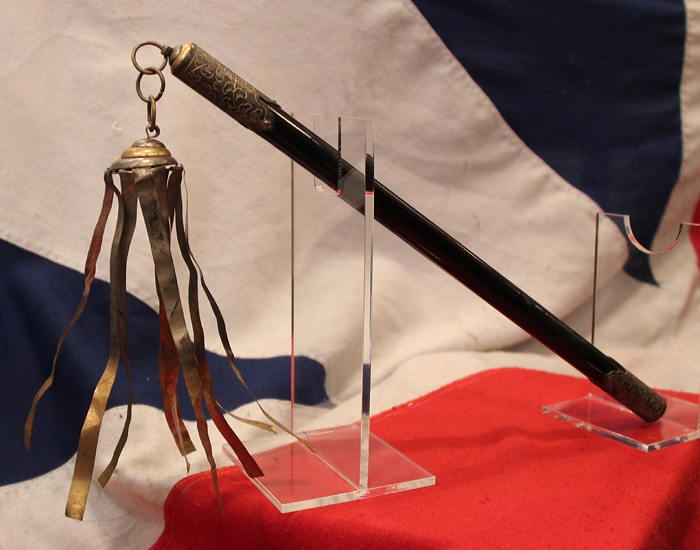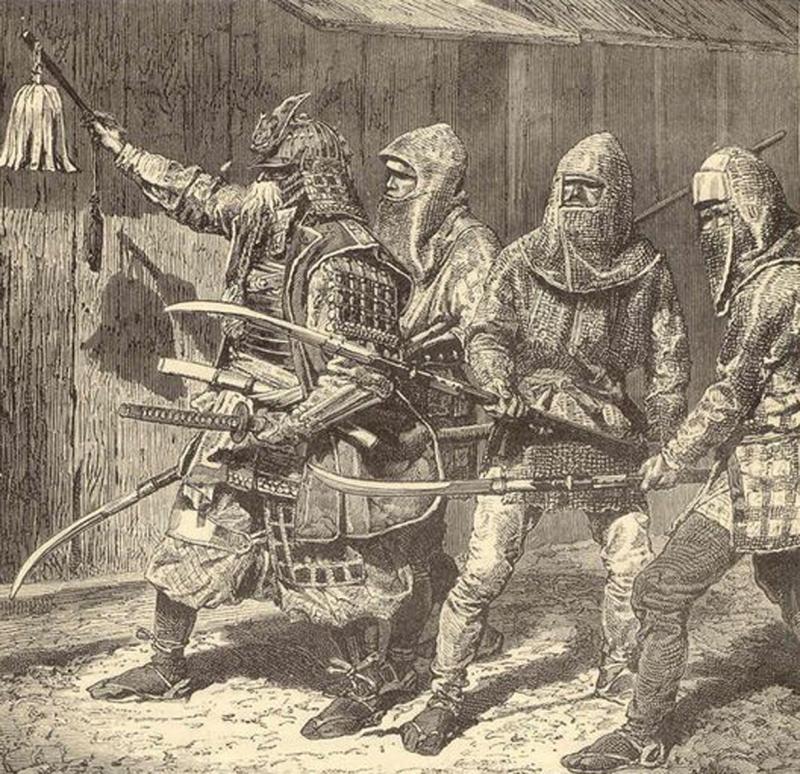A Most Scarce Antique Samurai Commander's Saihai, A Samurai Army Signalling Baton
Edo period. From a pair of different forms of saihai acquired by us.
For a commander to signal troop movements to his samurai army in battle. A Saihai, a most lightweight item of samurai warfare, and certainly a most innocuous looking instrument, despite being an important part of the control of samurai troop movements in combat, usually consisted of a lacquered wooden haft with metal ends. The butt had a hole for a cord for the saihai to be hung from the armour of the samurai commander when not being used. The head of the saihai had a hole with a cord attached to a tassel of strips of lacquered paper, leather, cloth or yak hair, rarest of all were metal strips. This is the metal strip version.
We show the lord Uesugi Kenshin holding his saihai, in an antique woodblock print, in the gallery.
The saihai first came into use during the 1570s and the 1590s between the Genki and Tensho year periods. Large troop movements and improved and varied tactics required commanders in the rear to be able to signal their troops during a battle Uesugi Kenshin (February 18, 1530 - April 19, 1578) was a daimyo who was born as Nagao Kagetora, and after the adoption into the Uesugi clan, ruled Echigo Province in the Sengoku period of Japan. He was one of the most powerful daimyos of the Sengoku period.
While chiefly remembered for his prowess on the battlefield, Kenshin is also regarded as an extremely skillful administrator who fostered the growth of local industries and trade; his rule saw a marked rise in the standard of living of Echigo.
Kenshin is famed for his honourable conduct, his military expertise, a long-standing rivalry with Takeda Shingen, his numerous campaigns to restore order in the Kanto region as the Kanto Kanrei, and his belief in the Buddhist god of war Bishamonten. In fact, many of his followers and others believed him to be the Avatar of Bishamonten, and called Kenshin "God of War".
Code: 21511







